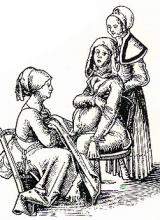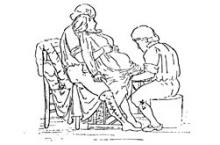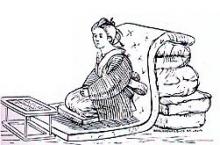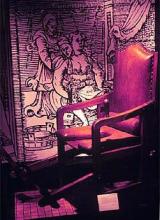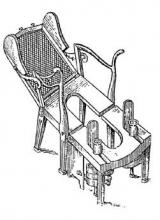The Art of Accoucher
In France, until the begining of the XVII century, the art of “accoucher” (give birth) belonged to women.
With the nobles and courtisan life appeared the figure of the obstetrician.
It was during Louis XIV’s kingdom that Julien Clement, a surgeon, was called to help Mme. De la Vallière (1663). The king wanted to see the “dolphin” being born. In order to do that, Madame lay down and was covered with sheets of tissue, possibiliting the vision of the birth.
The dames of the king imitated the king’s lover and were imitated by others.
The figure of the “accoucheur” – obstetrician – became common. Nevertheless the midwives, called “sage-femmes” – knowledgeable women, continued to help the common people to give birth and to control the maternities.
Birth happened in obstetric chairs, that gave place to beds; chairs that could be put in different positions.
When the doctor came in and dislodged the “parto femina est” motto, the academic discussions started.
Mauriceau (1638-1709), a French doctor that left an obstetrical manoeuver with his name, recommended the abolition of the working bed in favor of the patient’s own bed, claiming that it was too disturbing for the woman, tired from the effort of labor, to have to be transported. On the contrary, Dionisio, another doctor of the time, answered that small disturbance should’t get over the 20 comforts that the woman had above a working bed.
Mauriceau was in favor of bleeding: “It is an indispensable practice, and if the woman wants to make a trip, she must be bled on the arm a few days before, if she wants to keep her pregnancy”. The explanation at the time was that the embryo, on its first times, couldn’t consume the excess blood...
He also forbade sex on the two last months of pregnancy, to which he was also answered by Dionisio: “Mauriceau cannot have made his observations by himself, since he never had a child in 46 years of marriage. I have a wife that has been pregnant twenty times and gave me twenty children in happy births, and I believe that the husband’s caresses didn’t disturb her in anything”.
The pact between the medical ease and the noble’s comfort was signed.
Hygiene was still precarious and mortality was high. One in 30 women that gave birth died.
